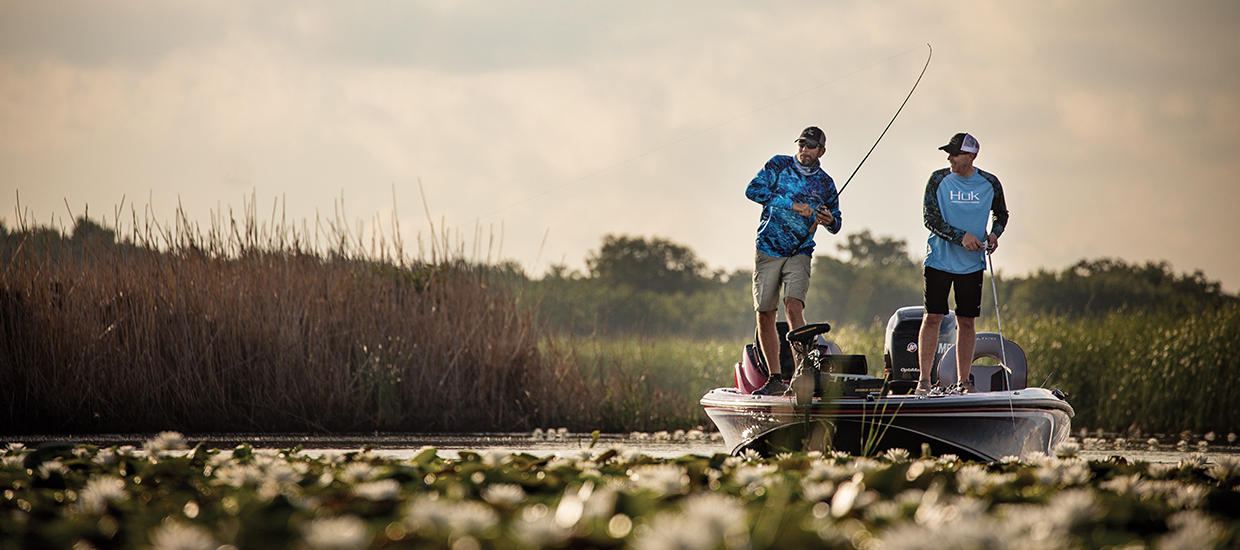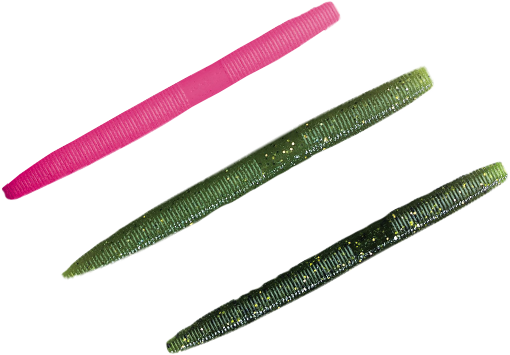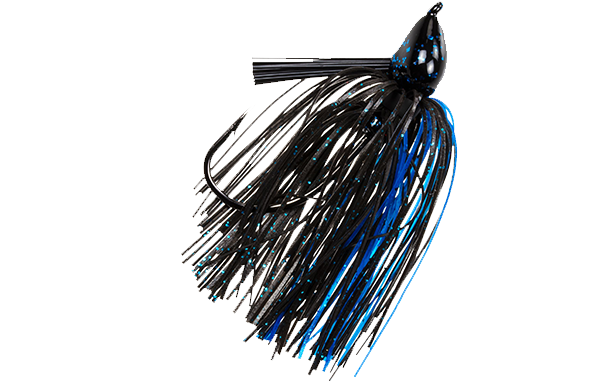Largemouth Bass

Characteristics

Largemouth Bass have robust bodies, thicker around the middle than their small-mouthed counterparts.
Features of Largemouth Fish Largemouth Bass have robust bodies that are thicker in the middle compared to Smallmouth Bass. They feature large heads, a blunt snout, and a wide lower jaw. Their dorsal fins are joined, and their coloration ranges from bright green to olive, with amber pectoral fins.
In Canada, the average Largemouth weighs 1-2 pounds, with many anglers catching fish over 5 pounds annually. They primarily eat plankton, insects, crayfish, and frogs in their youth, transitioning to other fish as adults.
Success in fishing for Largemouth Bass depends on identifying their preferred feeding areas, as they are aggressive and provide a thrilling challenge for anglers.
Habitat

Largemouth Bass are freshwater fish that have a distribution similar to that of the Smallmouth Bass (Ontario, Quebec, and southern region of Manitoba, Saskatchewan, and Alberta), although, their habitats rarely intersect because of their divergent preferences; largemouth Bass prefer soft bottoms, stumps, and ample vegetation.
They tend to gravitate toward warmer waters of small, shallow lakes or bays of larger lakes.
Areas with lily pads, or other thick layers of shelter, are prime areas to target for a largemouth Bass bounty.
Topwater

During the warmer months, Bass is more likely to feed from the surface. Post-spawn, they stay close to the shallower areas to protect their fry.
Anglers love this tactic as it’s particularly effective in heavy vegetation areas, where largemouth bass is known to strike right at the surface.
Tip: Stick to shady areas and mind the speed at which you work your lure (the colder the water, the slower the retrieve).
Plastics

Plastic baits are available in a wide array of shapes, colours, and sizes, each iteration with its own strengths.
Which plastics to use?
- Clear water and bright days: Use brighter plastics.
- Murkier water with low visibility: Use plastics that produce more vibrations like a Twister Tail, the Curly Tail Grub or Paddle Tails.
- In cold front situation: Smaller plastics as fish move towards smaller meals under these conditions.
Cranking/Searchbaits
Cranking or Searchbaits involve repeatedly casting your rod, and quickly cranking your reel.
This is recommended for more aggressive species that will be enticed by the challenge of quickly moving prey. When you’re fishing around cover, you should slow down your retrieve and/or slightly raise your rod, allowing your bait to pause.
Experiment by stopping and starting your bait when you’re running your lure through open water, which may help trigger strikes from more sedentary fish. When you do get a bite, try to remember what exactly you were doing when the strike occurred and adjust your technique accordingly. If it worked once, chances are it will work again!
Punching/Flipping

Punching/flipping involve making short casts in areas with heavy vegetation. Although this technique covers more water, it can be energy-consuming.
Use a heavy weight to penetrate the surface cover. If you don’t get a bite, let the weight fall while shaking the line or jigging the rod tip, then retrieve and cast again. Maintain tension in your line to feel your bait effectively.